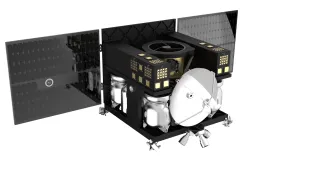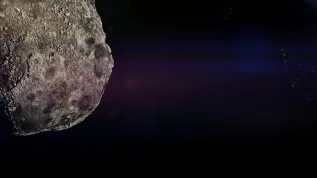
A gene from one of Earth’s toughest creatures – the tardigrade – may help future astronauts survive harsh space conditions, say Polish scientists studying genetically modified yeast brought back from orbit by astronaut Sławosz Uznański-Wiśniewski.
The biological samples from the Yeast TardigradeGene experiment were returned to Poland after being exposed to microgravity and cosmic radiation aboard the International Space Station (ISS). The experiment, part of the Polish IGNIS mission, was led by Professor Ewa Szuszkiewicz, astrobiologist at the University of Szczecin.
“Before we fly to Mars: Can tardigrades help protect other organisms in space?” — the full name of the experiment — is a collaboration between the University of Szczecin, Adam Mickiewicz University in Poznań, and the University of Silesia in Katowice.
Its goal is to determine whether tardigrade genes can improve the survival of living organisms in space, potentially enabling food or fuel production beyond Earth.
“The tardigrade is a very resilient animal that is not afraid of either low or high temperatures, vacuum, or microgravity. It is such a tough animal,” said Szuszkiewicz during a press conference at the University of Silesia. "So who can you learn from if not from an animal like this?”
The experiment involves yeast cells genetically modified to express a tardigrade protein known as alternative oxidase (AOX). This enzyme regulates mitochondrial respiration — a process known to be disrupted in microgravity — and is expected to increase yeast survival under extreme conditions in space.
“We want to test the hypothesis that expression of alternative oxidase will improve mitochondrial function in microgravity and under the influence of ionising radiation, and consequently increase the survival of yeast in space,” Szuszkiewicz explained. "Ionising radiation is the main obstacle to conquering Mars."
Tardigrades are microscopic animals ranging from 0.04 to 1.2 mm in length. Though small, they have demonstrated resilience to radiation, temperature extremes, and even the vacuum of space, making them prime candidates for inspiring bioengineering solutions.
A container with 40 yeast vials returned to Earth aboard the Dragon Grace spacecraft, which splashed down in the Pacific Ocean on July 18. The samples were then flown with Uznański-Wiśniewski to Europe, and arrived at Warsaw airport before being transferred to the Department of Bioenergetics at the Adam Mickiewicz University in Poznań. “The payload returned to Earth in excellent condition,” Szuszkiewicz confirmed.
The experiment was conducted in darkness at about 20°C, inside a custom-built, fireproof, crush-resistant box. Astronauts aboard the ISS were not allowed to open it. The device had been tested under vacuum, high pressure (13 atmospheres), and acceleration forces up to 9g, said Professor Franco Ferrari of the University of California, Berkeley, who is also involved in the project.
Ferrari outlined the contents of the container: five strains of yeast, eight vials per group. These included standard baker's yeast, yeast modified with a tardigrade gene, yeast modified with a jellyfish gene for comparison, and weakened yeast strains, some of which also carried the tardigrade gene.
“On Earth, we can see that this tardigrade gene works. Weakened cells cannot reproduce normally, but with the addition of the tardigrade gene, they multiply,” Ferrari explained. He emphasised the importance of studying how yeast cells breathe under space conditions: “Different modes of yeast respiration need to be investigated.”
While only 40 vials were sent to the ISS, the team originally proposed 120. “Anything that goes into space must be lightweight, durable, and take up little space,” Szuszkiewicz said.
She stressed the interdisciplinary nature of the project, highlighting collaboration among physicists, chemists, biologists, and astronomers.
“Only collaboration between specialists from various scientific disciplines will allow us to achieve the goal of space exploration.”
Szuszkiewicz also connected the research to broader national and global challenges. “We will not stop the rush to conquer space. Humanity is striving to go there. Poland must participate, or we will be left behind.” Importantly, the insights gained from this experiment may also benefit life on Earth. “Based on this research, we can also test drugs that are essential for fighting cancer,” she said. “The yeast in space experiment could also provide solutions to problems related to food and energy production.”
Sławosz Uznański-Wiśniewski and the rest of the Axiom-4 crew spent 18 days aboard the ISS, conducting experiments in the Columbus, Kibo, and ICE Cubes laboratories. Upon returning, the Polish astronaut flew to Europe aboard a government plane and is currently recovering at the Envihab medical research facility at the German Aerospace Center (DLR) in Cologne.
The yeast samples will now undergo detailed analysis in laboratories in Poznań and Katowice, where they will be compared with control samples exposed only to simulated radiation on Earth.
Results from the Yeast TardigradeGene experiment are expected to inform future research on space bioengineering, with potential applications for long-duration space travel, biofuel production, and medical innovation.
PAP - Science in Poland
tma/ bar/













